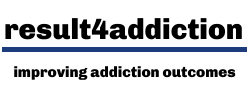Alcohol treatment research
selected articles
➊ Psychosocial interventions
Many social activities in the UK involve drinking alcohol - it’s a difficult drug to avoid. There are social rules about drinking times and practices. Where it becomes problematic, social support is key to the success of treatment, so it makes good sense to use a socially based method such as Social Behaviour and Network Therapy (SBNT) or the Community Reinforcement Approach (CRA).
Psychosocial treatments for uncomplicated addiction problems are generally not substance specific. The best psychosocial interventions build in new learning to support lifestyle change.
Landmark study :: How do the most promising psycho-social treatments compare?
UKATT Research Team (2005) Effectiveness of treatment for alcohol problems: findings of the randomised UK alcohol treatment trial (UKATT). British Medical Journal 331: 541
The UK Alcohol Treatment Trial (UKATT) was the largest treatment outcome trial conducted in the UK. It found Social Behaviour and Network Therapy and Motivational Enhancement Therapy to be equally effective and equally cost-effective. The number of drinks on a drinking day fell from an average of 27 to 19 and alcohol related problems from 12 to 6. Note that a significant number of people become abstinent before getting into treatment.
Project MATCH in the USA was a similar trial to UKATT comparing CBT, 12-step facilitation, and Motivational Enhancement Therapy. There were no significant differences in outcomes for the three interventions - secondary analysis has supported matching people with low motivation to MET. The drinking goal in the USA is commonly abstinence and practitioners are usually committed to this goal, which is the most likely reason that Project MATCH delivered better outcomes than UKATT when measured by abstinence.
➋ Pharmacotherapies
Pharmacotherapies for relapse prevention have definite benefits, however, they tend to be underused and not used to maximum effect. Different relapse prevention medications suit different situations:
Disulfiram :: best for an abstinence goal - do the health checks; 2. Acamprosate :: generally not very effective but works for some; 3. Naltrexone :: modest effectiveness - good ‘as needed’ for high risk situations
Landmark study :: How effective are relapse prevention medications?
Laaksonen E, Koski-Jannes A, Salaspuro M, Ahtinen H and Hannu Alho (2008) A Randomized, Multicentre, Open Label, Comparative Trial of Disulfiram, Naltrexone, and Acamprosate in the Treatment of Alcohol Dependence. Alcohol & Alcoholism 43: 53–61
All three groups showed a marked reduction in drinking. Treatment with disulfiram was more effective in reducing heavy drinking days and average weekly alcohol consumption, and increasing time to the first drink, as well as the number of abstinent days, both when supervised and self-directed. Participants were equally satisfied with each medication…
If individuals do drink then how much? There is a difference between a 'slip' and having a full blown binge which will be much more difficult to stop. The chart shows average ‘lapse amounts’ for each medication…
Comment NICE (National Institute for Clinical Excellence) conducted a meta-analysis (unpublished) of the effect sizes and drop-out rates. This analysis finds that acamprosate is least effective of the relapse prevention medications but with the lowest drop-out rate, while disulfiram is most effective but with the highest drop-out rate. Drop-out rates depend both on whether people experience side-effects and to what extent they have motivation for maintaining change…
Important study :: Real world effectiveness of relapse prevention medications?
Heikkinen M, Taipale H, Tanskanen A, Mittendorfer-Rutz E, Lähteenvuo M and Tiihonen J (2021) Real-world effectiveness of pharmacological treatments of alcohol use disorders in a Swedish nation-wide cohort of 125 556 patients. Addiction 116: 1990-1998
This Swedish population study looked at more than 125,000 people with a drinking problem - the severity of the problem was not known. Only a quarter were taking relapse prevention medication. A minority were prescribed combinations without significant benefit. Hospital admissions, either for the drink problem or for physical health reasons, were taken as the test of medication effectiveness as compared to not taking medication. The charts show acamprosate and benzodiazepines (not included as a relapse prevention medication) both increased the risk of hospitalisation. Benzodiazepines also increased mortality rates. None of the relapse medications (disulfiram, acamprosate, naltrexone or nalmefene) were associated with a higher risk of mortality, which is a positive safety signal.
More pages about addiction treatment…
Check out treatment for: alcohol, opioids, stimulants and cannabis


